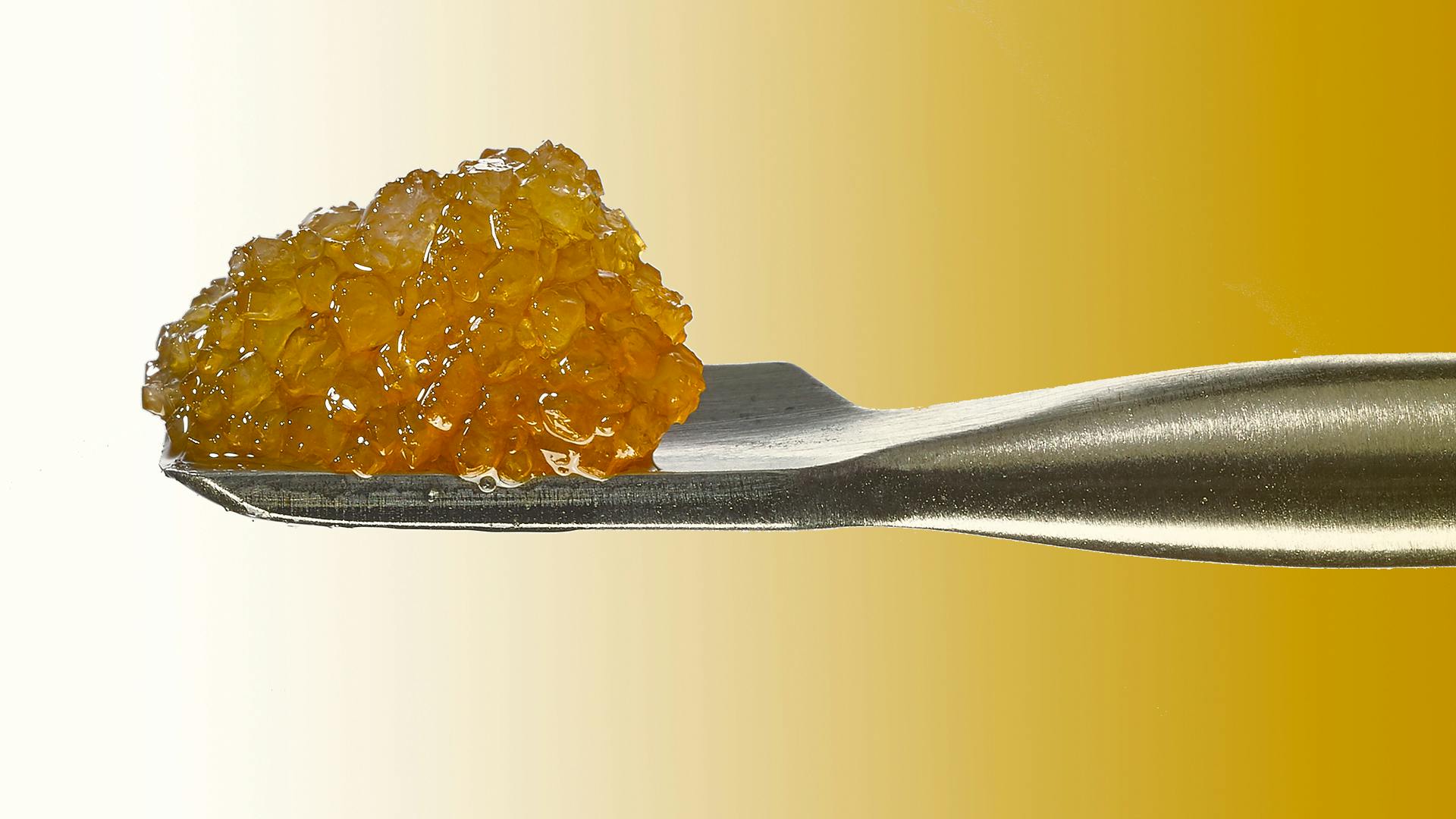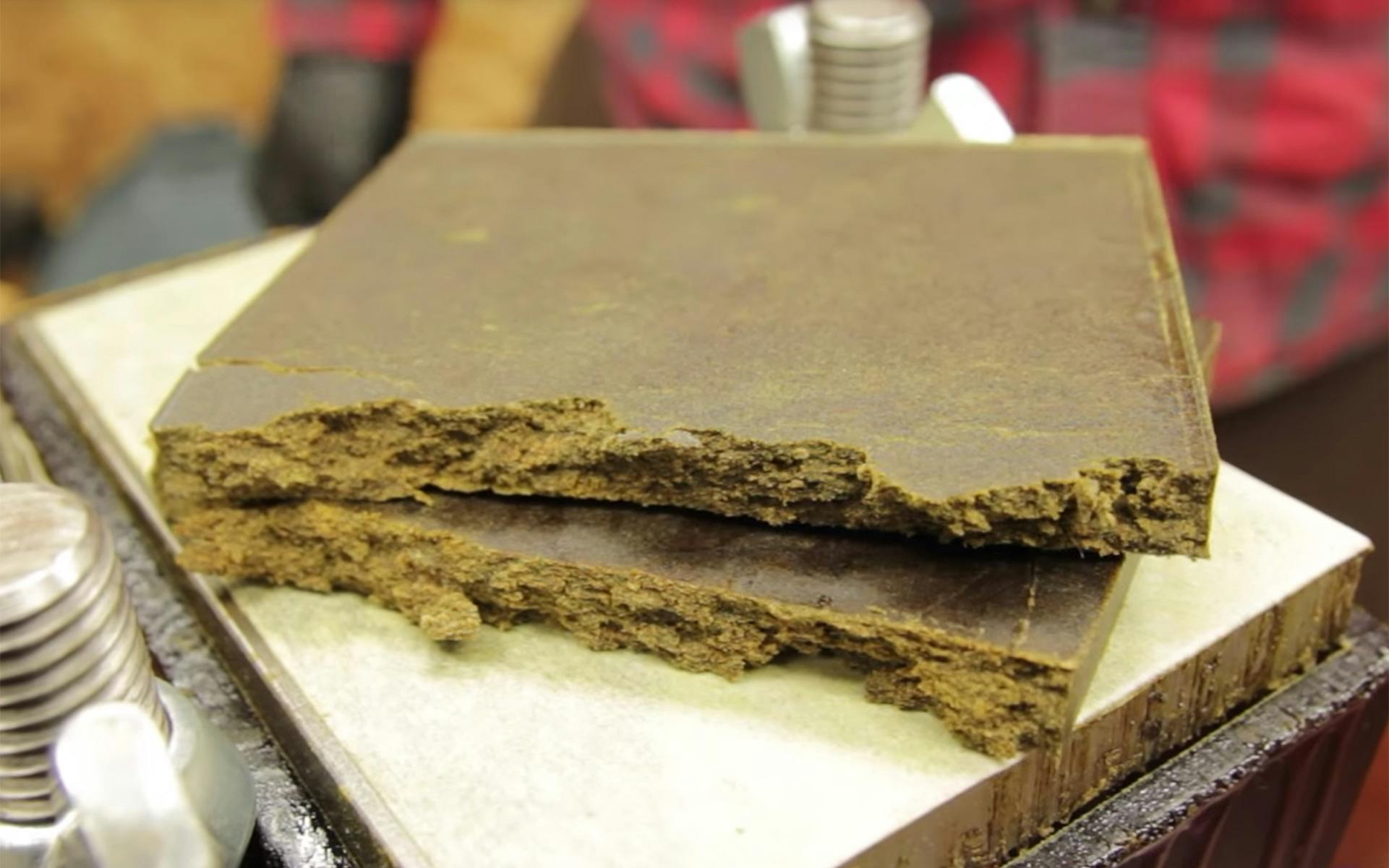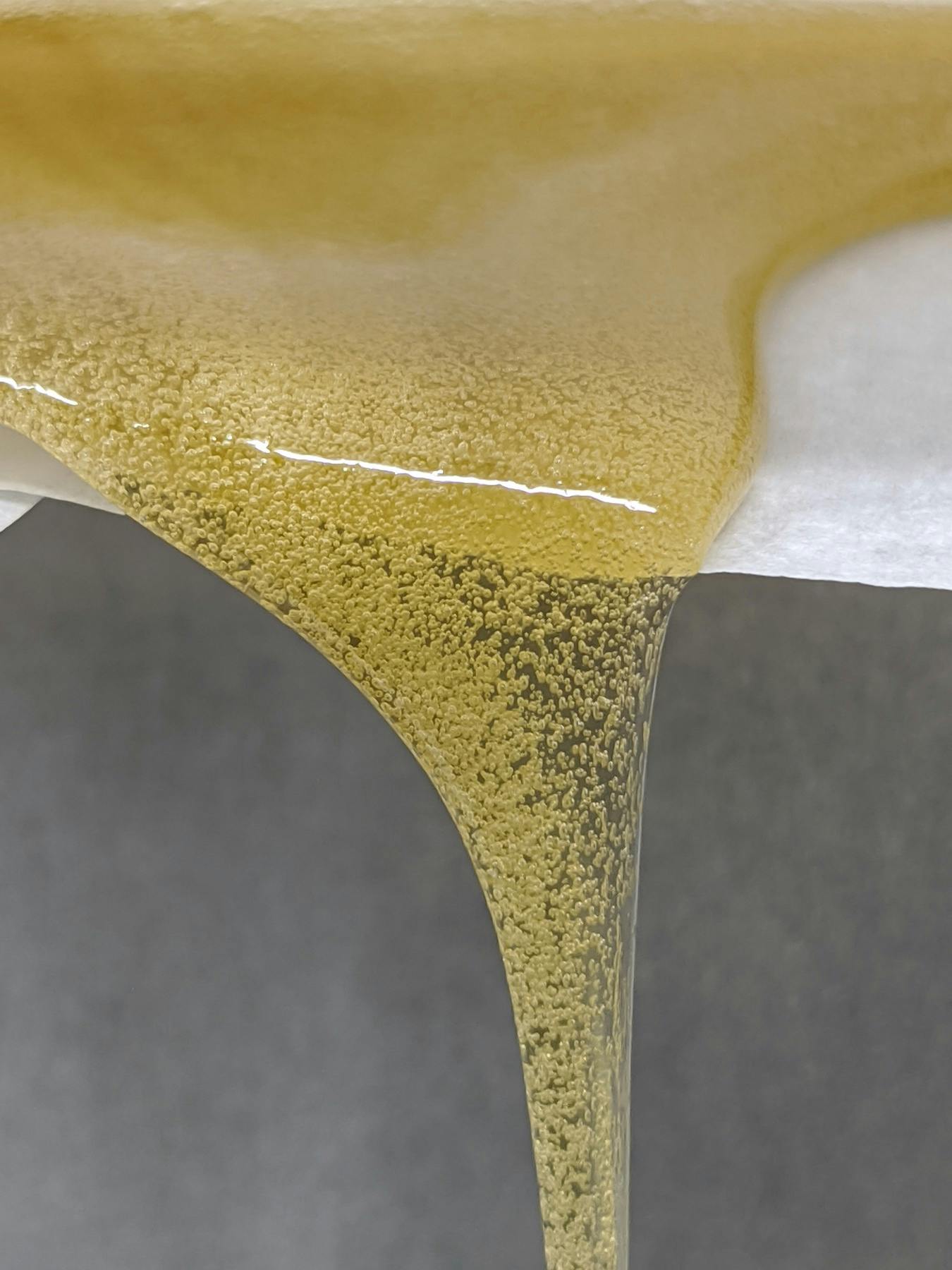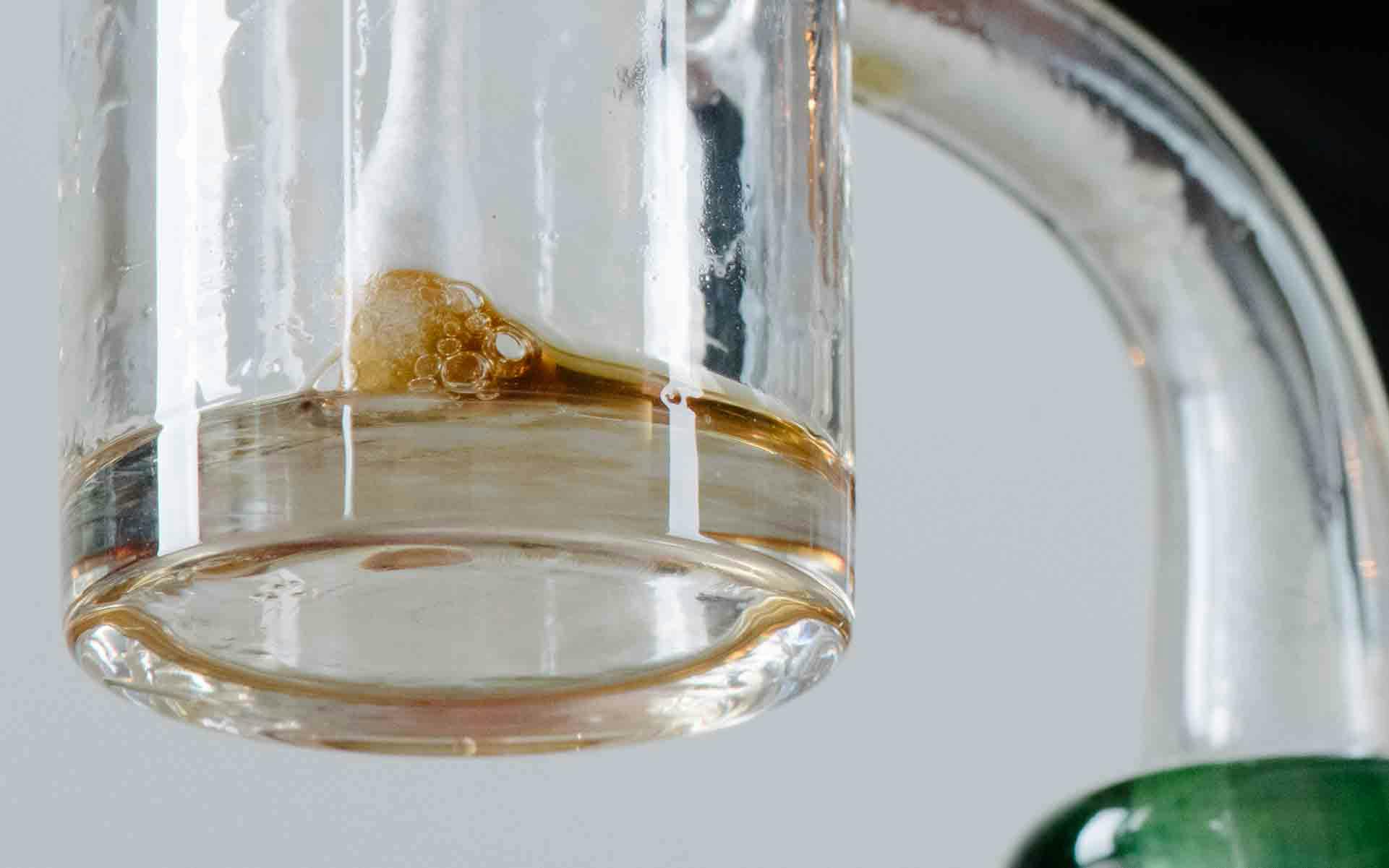
Of the many different types of cannabis concentrates or extractions, live resin is relatively new to the cannabis world. It has become popular among consumers and producers alike—it preserves the flavors and aromas of the living plant better than other cannabis extractions and is cheaper and easier to make.
Live resins usually have a more complex terpene profile and can deliver a more complex experience.
What is live resin?
Cannabis concentrates are often named or described by their textures or consistencies: some are hard and brittle, like shatter; some waxy; some thick and gooey, like batter; and some like sauce. By definition, live resin is a more malleable concentrate, sitting somewhere between a wax and a sauce—not quite like taffy yet not too wet.
It is typically dark yellow in color but can vary from light yellow to white. Like all cannabis concentrates, it is extremely sticky, so you’ll need a dab tool to handle it.
Live resins tend to be potent with a lot of THC, and consumers love it because of its intense flavors and aromas which carry over from the original plant.
How to make live resin
Live resin distinguishes itself from other types of cannabis concentrates because it is created with fresh frozen cannabis—plants that are frozen immediately after being cut down at harvest. These plants are kept frozen throughout the extraction process and skip the drying, curing, and trimming phases of harvesting.
The drying and curing processes that cannabis plants usually go through can have a devastating impact on terpenes, the plant’s flavor and aroma compounds. Terpenes are present in trichomes, which cover buds and surrounding foliage.
During drying and curing, moisture and chlorophyll leave the plant. This can expose trichomes to heat, oxygen, and light, all of which can degrade terpenes. Trichomes also tend to break off a plant as it is handled and moved around during harvesting.
By freezing the plant immediately after harvest, trichomes are preserved in live resin and the cannabis plant retains its valuable terpene profile, original flavor, and fragrance throughout the extraction process and into the final product.
After harvesting, frozen plants are put through a solvent extraction process, using butane, propane, or another solvent.
After harvest, here are the steps for creating live resin:
- Freeze plants/plant matter
- Extract the oil
- Process into live resin
Plants are kept at below freezing temperatures throughout the extraction process. After extraction, live resin is often heated in a vacuum oven. It can be packaged as is, or added to carts for vape pens.
Cured resin vs. live resin
The difference between these two concentrates is mainly in starting material: Cured resin is made from dried plant material, whereas live resin is made from frozen plant material that is kept frozen throughout the extraction process.
Cured resin is also more of a general term for an extraction from dried cannabis that will be turned into shatter, wax, batter, or various other types of concentrates.
Live resin vs. live rosin
Live resin is created by putting frozen cannabis plants through a solvent extraction, which uses a chemical such as butane or propane. Live rosin is solventless—it uses heat and pressure to remove trichomes from the plant, usually through a press.
Both extracts are “live” because they both use frozen cannabis plants as source material. Simple resins and rosins exist, which use dried plants, not frozen ones, and which also use solvent and solventless extraction processes, respectively.
Live resin vs. distillate
Distillate is a cannabis oil that is created when a resin is refined, either to remove impurities or to isolate a specific compound. It does not use frozen cannabis plants as its source material as live resin does.
When distillate is processed, it usually lacks terpenes, and therefore smell, taste, and flavor. Some consumers may prefer this neutral flavor in a vape cart, but it is quite different than the flavorful, terpy live resin.
Benefits of live resin
Dabbers love live resin because it is more flavorful and “terpy” than other concentrates. In preserving trichomes and terpenes, it retains the flavor profile of the original marijuana plant. Preserving trichomes also keeps cannabinoids intact, and live resin is also known to be potent.
Growers like producing plants for live resin as well. Fresh freezing plants at harvest means growers don’t have to go through the long, arduous processes of drying, curing, and trimming plants—whole plants can be chopped down, frozen, and sent directly to the extractor. Producing plants for live resin saves growers enormous amounts of time, labor, and money.
How to use live resin

Live resin can be consumed in a few different ways.
Dabbing
Dabbing is the most popular way to consume live resin. To do so, you’ll need a dab rig, torch, and nail, or an e-nail or e-rig. You’ll also need a dab tool to handle the concentrate and place it in the nail, most likely something with a scoop on it, given live resin’s goopy consistency.
Read more on the best dabbing temperatures.
Vaping with a dab pen or cart
You can also put live resin in a dab pen, essentially a small, handheld e-rig that allows you to easily control temperature and dab on the go.
Be sure to use a dabber tool to get the live resin into the oven or bowl of the dab pen. Then just adjust the temperature, press the button, and inhale.
Live resin can also come in disposable cartridges, similar to vaping distillate. Just screw the cart onto a battery, let it warm up, and puff away.
Topping off
You can also put some live resin on top of a bowl, joint, or blunt for an added kick.
Is live resin dangerous to consume?
We recommend all dabbers buy products from a licensed producer in a legal market to ensure products meet state-mandated health requirements. Solvent concentrates, such as live resin, must be purged of solvents and can only be sold if they contain a certain level of residue solvents.
Live resin bought in a legal market is just as safe to consume as any other dab or extract. Live resin must be dabbed, or vaped in a vape pen, and it cannot be eaten. As a concentrate, it is much stronger than flower and a little goes a long way.
O
How to store live resin
Keep live resin cool and in an air-tight container, preferably in a fridge if you can. This will preserve its terpenes and keep it tasting and smelling great for a while.
Leaving it out in the open with the lid off will expose it to air, light, and heat, which will degrade the terpenes and make it less flavorful. This will also cause it to dry out and harden, making it difficult to handle.
How much does live resin cost?
Live resin has come a long way. Only a few years ago it was a new, rare product only found in certain connoisseur markets at premium prices, sometimes exceeding $100 per gram.
Although live resin is still sold at a higher premium than other concentrates, nowadays, live resin prices are much more affordable and most dispensaries carry a range of options.
On the low end, live resins typically go for $20-30 a gram, but on the high end they can be upward of $50 a gram.
How are live resins different from one another?
Live resins can differ slightly in consistency—although they sit between waxes and sauces, some can be more like saps, sugars, or jellies.
The amount of terpenes in a live resin can affect viscosity, and some only contain lighter terpenes such as pinene and myrcene. Variations can also occur because some extraction processes fail to capture all terpenes. For example, live sugar is more crumbly and is thought to have less terpenes.
Concentrates can also be mechanically altered post-extraction, such as when saps are whipped into butters, creating different consistencies.
Where did live resin originate?
Live resin is relatively new to the cannabis concentrate scene. Its origins go back to 2011-2013 with a small group of growers and extractors in Colorado.
Among them, William Fenger, also known as “Kind Bill,” and EmoTek Labs founder “Giddy Up,” pioneered the live resin extraction process by developing a specialized BHO extractor capable of maintaining very low temperatures needed to produce live resin.
Together, they were able to preserve terpenes, flavor, and aroma during the extraction process.
Patrick Bennett contributed to this article.
Edited by Pat Goggins
By providing us with your email address, you agree to Leafly's Terms of Service and Privacy Policy.



